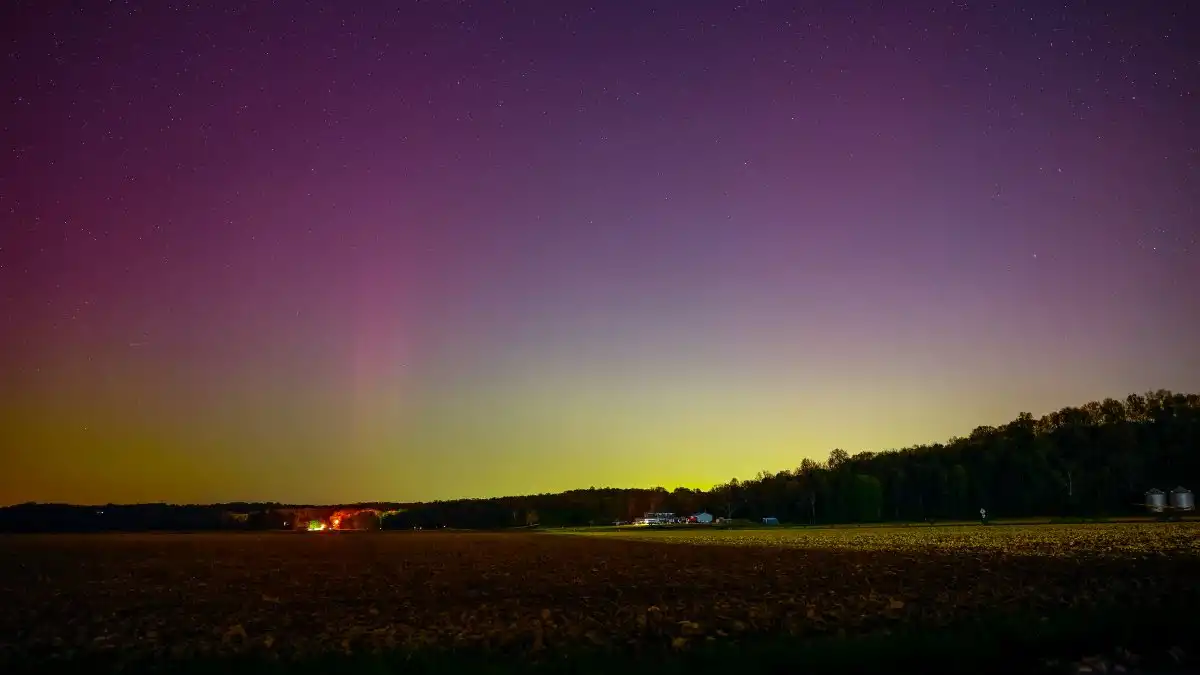Northern lights in Massachusetts: When to See the Auroras in the Sky
Northern lights may be visible in New England overnight due to a strong geomagnetic storm. Expect more sightings through 2025.
Get ready for a spectacular show in the night sky, as a strong geomagnetic storm could light up New England's skies on Thursday night into early Friday morning. If you've noticed the aurora borealis appearing more frequently than usual, you're not mistaken.
The northern lights, also known as the aurora borealis, are a breathtaking natural phenomenon that may be visible overnight in parts of New England. These colorful displays are caused by interactions between charged particles from the sun and Earth's atmosphere, particularly oxygen and nitrogen.
In the pre-dawn hours of Friday, New England will have the chance to witness this stunning display. The lights will become visible for northern latitudes late on Thursday evening, peaking in the upper-mid latitudes between midnight and 4 a.m. on Friday.
The lights will be at Kp6 or G2 moderate geomagnetic storm strength late on Thursday, increasing to a K7 or G3 strong geomagnetic storm strength after midnight. Although there may be some clouds, they are not expected to obstruct the view significantly, as they will not be too thick.
Understanding the sun cycle is essential to understanding the aurora. The sun's activity cycle spans 11 to 15 years, with low activity at the beginning and end, and peaks in the middle. During active phases, increased sunspots and temperature discrepancies between cooler sunspots and the sun's surface lead to solar flares and geomagnetic storms, generating stronger solar winds that propel charged ions towards Earth.
When these solar ions interact with atmospheric gases near the poles, they emit colorful light, creating the northern lights. The stronger the solar wind, the more brilliant the colors and the further south the lights can be seen.
As we approach the peak of the current solar cycle, expect increased aurora activity through 2025, with the best viewing occurring from September to March after heightened geomagnetic activity.
The northern tier of the U.S., including Maine, Vermont, and New Hampshire, typically sees the most vibrant colors. For the best viewing experience, find a location with minimal moonlight and darker skies.
Looking ahead, the next solar maximum is projected to occur between 2036 and 2041. So, if you have the opportunity, don't miss the chance to witness this awe-inspiring natural phenomenon in the night sky.











Comments on Northern lights in Massachusetts: When to See the Auroras in the Sky